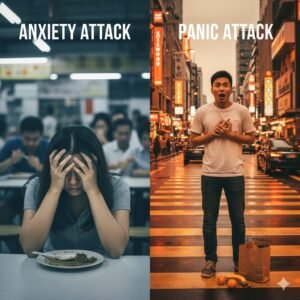Where Do Youth Drug Abusers Go?
When youth drug abusers in Singapore are caught, they are placed on specific rehabilitation pathways depending on the severity of their offense and their assessed risk of reoffending. The system focuses on reintegration and reducing recidivism rather than punitive measures, especially for first-time or lower-risk offenders.
Differentiated Pathways for Rehabilitation
Singapore’s approach to handling drug abusers, including youths, emphasizes rehabilitation over punishment. Youths caught purely for drug consumption offenses are often directed towards treatment and rehabilitation rather than facing criminal charges. If they are sent to the Drug Rehabilitation Centre (DRC) for treatment, they do not receive a criminal record unless they are also involved in other criminal activities, in which case they may be charged under the Misuse of Drugs Act 1973.
Youth Enhanced Supervision (YES)
For first-time, lower-risk youth offenders, the Youth Enhanced Supervision (YES) program was introduced in 2013 by the Ministry of Social and Family Development (MSF). This non-residential program is targeted at youths under 21 who are assessed as having a low risk of reoffending. The youth and their families are heavily involved in the rehabilitation process, with mandatory counseling sessions that focus on increasing motivation for change and teaching skills to avoid drug use. Parents are also educated on effective parenting techniques to support their children’s recovery.
Under YES, youths undergo regular urine tests at the Central Narcotics Bureau (CNB) as part of their 6-month program, which can be extended for another six months if necessary. This structured support system helps young offenders build a drug-free life without the stigma of criminal charges.
Drug Rehabilitation Centre (DRC)
Youths assessed as having a moderate or high risk of relapse, or those who are repeat offenders, are sent to the DRC. The DRC provides a more intensive rehabilitation regime tailored to individual needs, including psychological interventions, family programs, and vocational training. The goal is to equip these youths with the skills necessary for successful reintegration into society. The duration of their rehabilitation at the DRC typically lasts 12 months or more.
Youth offenders who complete the DRC program successfully and are not under investigation for other offenses will not have a criminal record, which helps them reintegrate more smoothly into society.
Community Rehabilitation Centre (CRC)
In 2014, the Singapore Prison Service (SPS) introduced the Community Rehabilitation Centre (CRC) as a step-down arrangement for young offenders aged 16 to below 21 who have completed a short detention at the DRC. The CRC is designed for first-time youth offenders who are assessed as having a moderate risk of reoffending. This 12-month program provides case management support and helps minimize disruption to the youths’ daily lives while continuing to address their reintegration needs.
Post-Release Supervision
After release, youth offenders are placed under a five-year Supervision Order, which includes regular urine and hair tests to detect and prevent relapse. The supervision scheme is a critical component in helping these youths maintain a drug-free lifestyle over the long term. Those who demonstrate good progress during their supervision may transition to less frequent hair analysis tests, though non-compliance with the supervision terms can result in the withdrawal of these privileges.
Eligible youths under supervision also participate in Community Supervision Sessions conducted by CNB officers. Since 2019, these officers have been trained in Community Supervision Skills (CoSS) to better engage and support the youths in their rehabilitation journey.
Conclusion
Singapore’s approach to youth drug offenders focuses on rehabilitation, with pathways tailored to the individual’s risk level and needs. Through programs like YES, DRC, and CRC, the system provides structured support to help young offenders overcome their addiction, avoid criminal records, and reintegrate successfully into society.
https://www.cnb.gov.sg/CNBExplains/cnb-explains-where-do-youth-drug-abusers-go-when-caught
Where Do Adult Drug Abusers Go?
When adult drug abusers in Singapore are caught, they are placed into a differentiated rehabilitation system based on their offense and risk of reoffending. The system prioritizes treatment and rehabilitation over punishment, particularly for those caught for the first time.
First-Time, Low-Risk Offenders
For first-time offenders deemed low-risk, the Enhanced Direct Supervision Order (EDSO) was introduced in 2019 under the Misuse of Drugs Act amendments. The EDSO aims to facilitate the reintegration of these individuals into society without the need for them to be sent to the Drug Rehabilitation Centre (DRC). Instead, they are allowed to remain at home under supervision, and are assigned a community case manager by the Singapore Anti-Narcotics Association (SANA). The EDSO requires them to attend compulsory counseling sessions, undergo regular urine tests, and participate in psychology-based interventions like goal-setting and family engagement. These measures help monitor progress and adjust interventions as needed.
Drug Rehabilitation Centre (DRC) for Higher-Risk or Repeat Offenders
Adults who pose a moderate to high risk of relapse or who have been caught multiple times are sent to the DRC, where they undergo more intensive rehabilitation. The DRC regime is tailored to individual needs and includes psychological interventions targeting drug use habits, family programs to strengthen relationships, and vocational and employability skills training. This approach helps them reintegrate into society successfully. Importantly, those who complete the DRC program and are not under investigation for other offenses will not receive a criminal record, which helps to reduce the stigma and challenges of reintegration.
The duration of rehabilitation at the DRC is typically 12 months or more, and the program has been enhanced to extend this intensive rehabilitation to repeat offenders, even those who are third-time or higher offenders.
Post-Release Supervision
After release from the DRC, all drug abusers are placed under a five-year Supervision Order as part of the Drug Supervision Scheme. This includes regular mandatory urine tests to detect and deter relapse, with the possibility of transitioning to hair analysis tests for those who demonstrate good progress. However, failure to comply with the terms of the supervision order can result in stricter monitoring.
The supervision scheme serves as a critical support system for individuals as they work to maintain a drug-free lifestyle. The Community Supervision Sessions, conducted by CNB officers who have been trained in Community Supervision Skills (CoSS) since 2019, provide additional engagement and support during this period.
Conclusion
Singapore’s approach to handling adult drug abusers emphasizes rehabilitation and reintegration rather than punishment. First-time, low-risk offenders are placed under Enhanced Direct Supervision Order (EDSO), allowing them to stay at home under supervision with structured support. Higher-risk or repeat offenders undergo more intensive rehabilitation at the Drug Rehabilitation Centre (DRC), where they receive tailored psychological, familial, and vocational support. After completing the DRC program, they are placed under a five-year supervision scheme, which includes regular urine tests and the possibility of transitioning to hair analysis tests for those who demonstrate progress. The aim is to help these individuals maintain a drug-free lifestyle and reintegrate into society without the stigma of a criminal record.
https://www.cnb.gov.sg/CNBExplains/where-do-adult-drug-abusers-go-when-caught







